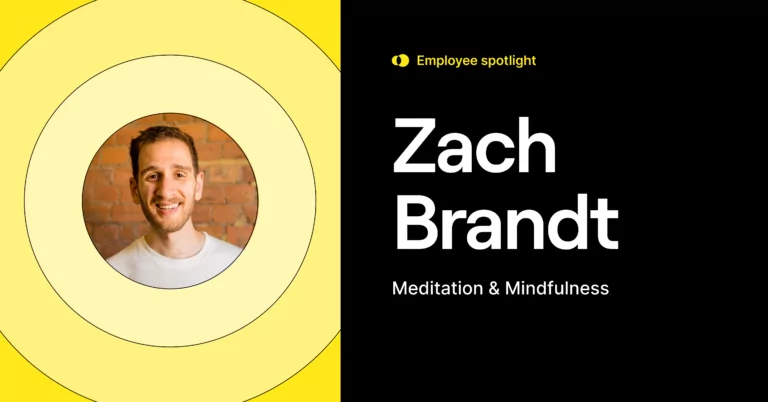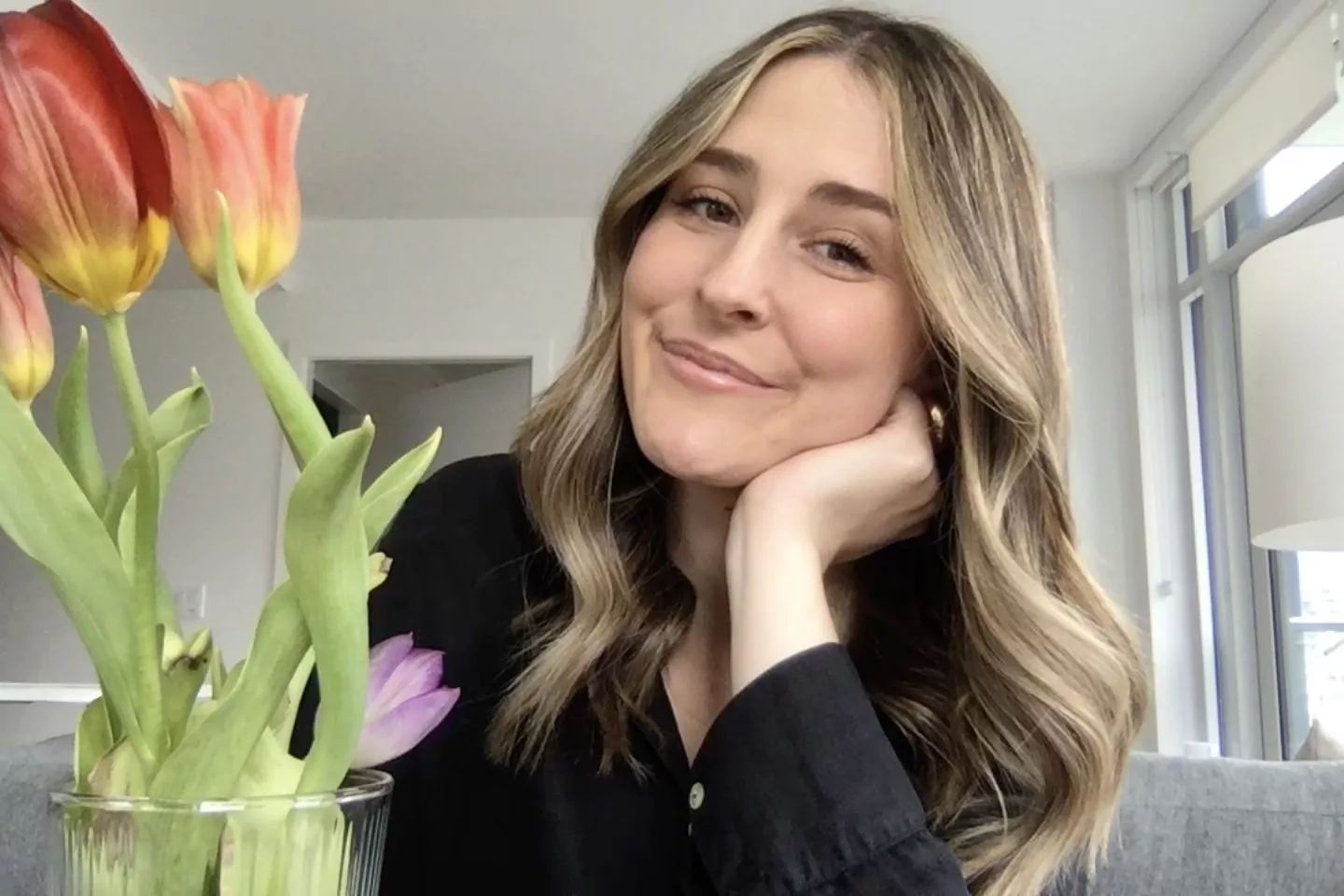The practice of meditation isn’t new. It’s been around for thousands of years. It’s often used as a way to reduce stress and develop concentration, but can also have added benefits like developing a more positive mood and outlook, a more consistent sleeping pattern and a healthier well-being overall.
Have you ever thought about trying meditation but don’t know where to start or if it really works? Fear not, dear reader! We had a chat with Zach Brandt, Senior Backend Engineer, who shared his journey with meditation in honor of Mental Health Awareness Month He told us about how he formed this life-changing habit, and how he uses it to stay focused while working at a fully remote company.
Steph: Let’s start with some introductions! Mind sharing your name, what you do at OpenPhone, and how long you’ve been here?
Zach: Hi, my name is Zach Brandt. I am a Senior Backend Engineer at OpenPhone, and I’ve been here for about four months.
Steph: How were you first introduced to meditation, and how long have you been practicing?
Zach: When I was in eighth grade, I came down to my dad’s office, and he was lying on the floor with the lights off. I was just like, “What are you doing?” I thought he had a heart attack or something, but, he was just meditating. That was the first time I was introduced to meditation.
A few years later, I started reading more about it and started practicing daily. Minus a few days missed due to travelling or other things — I’ve been meditating every morning and night ever since.
Steph: What does this routine look like in the morning vs nighttime?
Zach: Meditating first thing in the morning is a nice way to set the intention for the day. I find it helps to clear my mind and get focused and really just put my best foot forward for the day. Traditionally I’ve done breath meditation (or insight meditation, as it’s also known) in the morning. You focus on the breath and on the air entering and leaving your body. I find that my emotions can sometimes be repressed, and I’ve been enjoying the benefits of meditations that focus on feeling your emotions.
As for nighttime, I’m someone who has not been the best sleeper throughout my life. It takes me a while to fall asleep, and I struggle to fall into a deep sleep. I found that when I meditate at night, right before bedtime, I sleep a lot better. I fall asleep quicker, and it feels like I had deeper sleep. I stick to more relaxing mediations at night. I will usually put on a body scan or a breath meditation that’s focused on deep breaths and elongating the exhales. This has been shown to slow down the nervous system and improve relaxation.
Steph: What are your favorite free and paid meditation/mindfulness apps?
Zach: My favorite free meditation app is Insight Timer. It’s a community-driven app. Various people post meditations, talks, and things like that. I found a lot of really great meditations and teachers on there. You can also pay for Insight Timer, it allows you to unlock courses by those teachers. As a free meditation app, it’s one of the most popular worldwide, and I really enjoy using it.
When it comes to paid apps, I either like paying for Insight Timer or my favorite paid meditation app is Ten Percent Happier. It’s similar to apps like Headspace or Calm, but I resonate more with the teachers and their approach to the meditations. Ten Percent Happier has a lot of courses where you can learn about specific subjects like happiness or stress relief etc.
Steph: What free resources can be used outside of apps?
Zach: Meditation in itself is totally free. Just sitting and focusing on your breath, even if it’s just for three in and out breaths, is meditation.
Sometimes while I’m working and I have a few minutes before my next meeting starts, I’ll close my eyes and take a few deep breaths, and I find that it puts me into a calm head space, which really benefits my next meeting.
I also really like walking meditation. I’ll step away from my computer and go for a short walk and focus on the feet and the sensation as they hit the ground as I’m walking. It can be a really nice way to bring you into the moment, away from your computer and out of your head. I find it carries over to your work and benefits the rest of the day.
Steph: How can we start to create this habit and begin carving out time for it?
Zach: It can be tough to context-switch between work and meditation. But there are ways to help make it a little easier.
For those that have been practicing meditation for a while, putting 5-10 minute blocks in your calendar is a great reminder to take time for mindfulness during the day.
For beginners and those trying to form the habit of meditation, it can be hard to be carving out time to relax when you’ve got a heavy workload, or you’re thinking about your next stressful meeting.
For those trying to form a habit, I would recommend sticking to a time that works for you, whether that be first thing in the morning, during your lunch break, after work or at bedtime, and try to stick to at least two minutes a day.

A lot of people burn out when they first take up meditation. They jump right in and start doing 20 minutes, two times a day. It’s the same as working out. If you’d never worked out in your life and all of a sudden started going to the gym two hours a day, five days a week, chances are you’d burn out pretty quickly and potentially give it up.
Ease yourself into it, and remember that even doing two, or three minutes a day can have a really big effect.
Steph: While working for a fully-remote company, how do you and others at OpenPhone promote mindfulness and mental health awareness?
Zach: By creating a space where people who already practice mindfulness or people who are interested in mindfulness can connect with each other. This has the added benefit of meeting people from other departments and bringing in a social aspect.
We have a Slack channel called “health and wellness,” where people can share ideas and encourage each other to practice mindfulness and healthy habits. In March of this year, I led a guided meditation during one of our monthly OpenTalks. After receiving positive feedback, we’re trialling a bi-weekly guided meditation for people to take a break during their workday and meditate together. Some of the team also created an April meditation challenge as a way of gently holding ourselves accountable and connecting with others who are interested in doing the same.

There are studies about how meditation can improve focus and cognitive ability as well as lowering stress levels. One study by Project Meditation shows that meditation can increase employees’ productivity by 120%. So it’s one of those things where you have to spend money to make money. Taking just 10 minutes to meditate can increase productivity and employee happiness.
Steph: What’s a piece of advice for those wanting to get into meditation?
Zach: A lot of people tend to treat meditation as an SOS. So when you become angry or anxious, you’ll use meditation as a once-off to help with current emotions. If that works for you, that’s great, but it’s similar to saying, “Okay, I’m going to run a marathon today” without having any training. You need to train your body to run a marathon. You also need to train your mind to get the full effects of meditation. Meditation is great as a preventative measure, and this is where daily practice comes in.
A lot of the time, when you go to sit and complete a meditation, you won’t be feeling like you need to meditate. You won’t be feeling stressed or angry, and really, you just might not want to. Those sessions are oftentimes the most beneficial. You’re showing your body that even in these cases, I can still feel the effects of meditation. Next time you need this resource in the future, you have the habit already formed.

